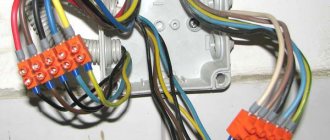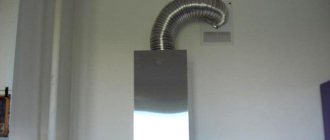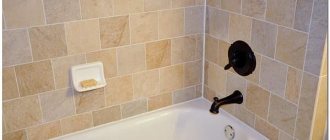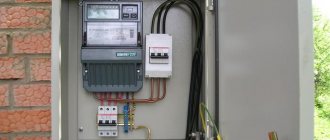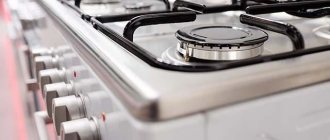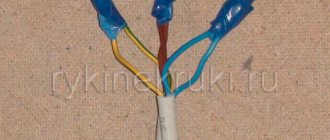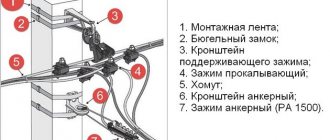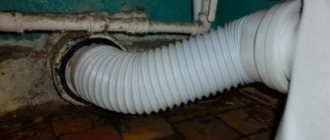I think many of us understand that connecting twisted pair cables to each other does not require high qualifications, but some nuances in this matter should still be taken into account. Restoring or extending twisted pair cables at home or in the office has to be done for various reasons. For example, you decided to move your computer to a new workplace, connect several computers into a local network, but your LAN cable is not long enough, or you accidentally crushed the twisted pair cable with a table leg, and now it needs to be repaired.
As you understand, there can be many reasons when a twisted pair connection becomes necessary. Of course, in such situations, nothing prevents you from turning to the services of a specialist, but if you are not averse to quickly eliminating the damage without resorting to outside help and want to connect the LAN cable yourself, then...
You can repair a damaged LAN cable or extend it by twisting or soldering wires of the same color together or through a special RJ-45 connector. Using twisting (the telephone operator's method), you can connect a twisted pair, maintaining the strength and performance of the line without a connector and an RJ-45 (8P8C) connector.
But connecting a LAN cable using soldering or plug-in connections requires you to have experience and tools. In fact, splicing twisted pairs using these methods is not difficult, but you don’t always have a soldering iron, crimping pliers, and connectors at hand. Therefore, twisting twisted pair is an alternative method to these two, but even in this case you will need at least electrical tape and a knife. In general, I won’t spoil the article, but I’ll tell you everything in order.
RJ 45 connectors
RJ 45 connectors are the most common type, most often used in the construction of local area networks. This name corresponds to the technical term 8Р4С - a jack equipped with eight contacts (knives) and four latches. Although it is generally accepted that the name RJ45 hides the 8P8C connector, which differs from the previous one in dimensions and physical characteristics (8 knives and 8 latches).
Depending on the version, this type of connector may or may not have a protective shield. The shielded FTP RJ45 jack should only be used with shielded twisted pair cable. Otherwise, it not only loses all meaning, but also becomes unprofitable from an economic point of view. The main difference between an FTP connector and an unshielded connector (UTP) is the presence of a metal braid, which performs the function of removing electromagnetic waves from both the jack itself and the cable.
As for the design, all connectors are almost identical, since they consist of a plastic body, knives and their clamps.
In what cases is network cable extension required?
Reason 1
Usually it is necessary to resort to extension of twisted pair cable when a desktop computer or laptop is moved to the farthest room of the apartment.
In houses made of reinforced concrete structures, the signal will weaken if the computer is moved far from the Internet distribution point. Therefore, there is a possibility that pages in the browser will open more slowly and freeze periodically.
FOR REFERENCE! The distance from the router to the laptop/computer can be reduced by rearranging the router itself. However, the cable extension will still have to be done, but this time it will be the one that runs from the staircase into the apartment.
Reason 2
If the network cable is not hidden under a plasterboard wall or baseboard, it can be easily damaged as it is not protected. Damage can come from both the chair and the door.
When there are animals or small children in the house, they can also break the Internet cable. This will not only cause inconvenience, but is also dangerous for them, so it is better to hide the wires under the baseboard or sew them into the wall.
If the wire is still broken, then to restore it it is necessary to cut off the damaged section and connect it by twisting or using an RG-45 connector..
Telephone connectors
Telephone connectors are represented by three types of modules - RJ11, RJ14, RJ25. There is complete confusion in understanding the markings of these connectors. That is why it is best to make your choice based on the number of knives that each jack contains. In general, the main types of connectors are characterized by the same form factor and purpose (telephone line switching):
- RJ11 (6P2C) – connects a two-wire cable;
- RJ14 (6P4C) – connects a four-wire cable;
- RJ25 (6P6C) – a six-core cable is connected.
Depending on the situation, telephone jacks may use cables with fewer wires and a smaller form factor. These include the RJ9 (4Р4С) module, designed for connecting handsets to the device itself.
Secure the connector
Frame: Electronics&Computers / YouTube
Next, you need to fix the plug, which is needed so that the cable does not accidentally pull out and you are not left without the Internet. This can be done later, but it’s better not to put it off: this way you won’t have to hold the wires while crimping.
To do this, unfold the plug with the contacts facing up and place it on a table or other hard surface. Make sure the outer shell fits slightly deeper than the retainer. If this is not the case, pull out the wire and shorten the wires a little. Using a screwdriver, press the small tab in the recess at the edge of the connector to press the cable.
Types of twisted pair connectors
When building telecommunication networks based on twisted pair cables, many different connectors (sockets, jacks) are used. In order not to get confused and find your way when choosing, it doesn’t hurt to have at least the slightest idea about them.
Jack is an indispensable element of any local network, because it is used to connect active electronic devices. That is why they are used in the process of creating a telephone or computer network, as well as a telephone set. The main characteristic of a connector is its type
Color coding
All wires in a twisted pair cable are color coded . Depending on what devices need to be connected, the wires are arranged in a certain way. If you need to connect a computer or TV with a router, then the so-called direct wire connection is used. If two devices of the same type are directly combined, for example, a computer with a computer, then crimping is performed using the cross crimping method. This method is also called “crossover”.
The cable wires must be installed in strict accordance with a certain order. If you take the connector and rotate it so that the latch is down and the recesses with copper contacts are away from you, the pin numbering will be from left to right. Number 1 will be located on the left, and number 8 on the right. The “TIA/EIA” twisted pair crimp standard is determined by two varieties: 568A, 568B. The last option - 568B - is more common among us.
Table No. 1 : Crimping diagram for an 8-core cable according to standards 568A, 568B with direct connection
| Core no. | 568B | 568A |
| 1 | white-orange | white-green |
| 2 | orange | green |
| 3 | white-green | white-orange |
| 4 | blue | blue |
| 5 | white-blue | white-blue |
| 6 | green | orange |
| 7 | white-brown | white-brown |
| 8 | brown | brown |
As you can see from the sequence, the green and orange wires and their striped variants change places. Also, do not forget the following feature : the wires at both ends of the cable should be located equally. This means that if at one end of the cable the connector is located with the snap down and there is a white and orange wire on the left, then a wire with the same color should be located on the left and on the other end.
The "crossover" (or crossover) cable arrangement corresponds to the use of both the 568A and 568B crimp standards. Essentially, the wires are swapped to match the colors: green, orange, and their intermittent variants. The marking scheme for one connector is as follows:
Table No. 2: Crimping diagram for an 8-core cable with a “crossover”
| Core no. | right connector | left connector |
| 1 | white-green | white-orange |
| 2 | green | orange |
| 3 | white-orange | white-green |
| 4 | blue | blue |
| 5 | white-blue | white-blue |
| 6 | orange | green |
| 7 | white-brown | white-brown |
| 8 | brown | brown |
It should be separately noted the option of connecting a twisted pair cable consisting of 4 cores. It is needed in cases where the connection speed within 100 Mb/s is sufficient. A smaller number of cores will significantly save money when purchasing cables. The connectors use only 4 wires corresponding to the grooves of the RJ-45 connector: 1, 2, 3 and 6. In this case, it is more difficult to get tangled in the wires. If the cable uses brown and blue wires, then when cross-connecting, the connection diagram should be like this.
Table No. 3: Crimping 4-core cable with “crossover”
| Core no. | right connector | left connector |
| 1 | white-brown | white-blue |
| 2 | brown | blue |
| 3 | white-blue | white-brown |
| 6 | blue | brown |
With a direct connection, both ends of the wire are crimped equally using one of the options.
Conclusion
The easiest way is twisting; it does not require special skills, tools or effort. But still it is not suitable for providing high-speed Internet.
If you are aiming to obtain high-quality data transmission, then it is better to purchase a factory-made cable and connect it to the necessary devices according to the instructions. It will be safer and better quality.
Sources
- https://rusenergetics.ru/raboty/obzhim-vitoj-pary-konnektorom-rj-45
- https://skomplekt.com/vitaya-para-kategorii-obzhim-sovetyi/
- https://www.asutpp.ru/obzhim-vitoj-pary.html
- https://sovet-ingenera.com/elektrika/provodka/kak-soedinit-vituyu-paru-mezhdu-soboj.html
- https://www.bazaznaniyst.ru/sposoby-soedineniya-vitoj-pary/
- https://lanportal.ru/lan/kak-soedinit-lyuboj-internet-kabel-vituyu-paru-mezhdu-soboj.html
- https://eserver24.ru/stati/5-sposobov-soedinit-vituju-paru
- https://nastroisam.ru/kak-udlinit-internet-kabel/
BNC connectors
BNC connectors are a type of connector used in video surveillance systems to connect a coaxial cable (an electrical cable that includes a coaxially located central conductor and screen). It is considered the most reliable, even though it was created more than sixty years ago.
Special crimping of the BNC connector requires certain costs, but such costs are recouped due to the high reliability and durability of this type of jack. Most of the failures during the operation of a video surveillance camera are caused by poor-quality cable connections. BNC connectors ensure proper connection of coaxial cable, which prevents losses that may occur during signal transmission.
There are a huge number of BNC connectors available today. Plugs, or as they are also called “male connections,” are especially popular. Female connectors (female connections) are no less popular. The wide range of these products includes corner adapters and BNC terminations. Connectors trimmed with precious metals (silver or gold) are also in demand, because this design significantly reduces resistance and prevents oxidation.
Twisted pair connection methods
fiber optic cable
This is the fastest data transfer technology on the Internet. Not only cities, but also continents are connected through such cables. Fiber optic cable has many advantages, for example:
- Good throughput;
- Durability;
- High speed of information transfer;
- Anti-interference, etc.
However, the cost of this cable is very high.
coaxial wire
The main feature of such a wire is the wave impedance, on which the quality of the signal depends. Most often it is used to lay routes for video tracking systems. Despite the fact that some characteristics of coaxial wire are higher than that of twisted pair, it is much less common, since twisted pair has a lower cost, is easier to install and is faster to install.
Extend the cord using a connecting adapter
This method is universal and can be used to connect the main cord from the provider, or to combine the cord of a PC, modem, router, etc.
Such adapters are called joyners, they are quite simple in design, they look like a double-sided connector for a power cord plug. To use this adapter, it is necessary that the ends of the cables be crimped and equipped with connectors. This operation can be done using special devices or ordinary household tools.
Using this method, in the process of purchasing a network cable, you can ask to crimp it directly at the service center; this operation is performed in all stores that sell such products. Having an adapter and crimped cables, the further connection process is quite simple, you need to connect the cables to the connectors of the adapter and that’s it, the work is finished.
As an analogue, you can use adapters of the coupler type; they are quite convenient, and even much easier to operate than adapters of the joyner type, since when using them there is no need to carry out such an additional operation as crimping the cable. They are often confused with splitters; special attention should be paid to this point.
Crimping twisted pair
The main advantages of copper cable compared to optical cable are its low cost and ease of deployment. All that is required for termination is a crimping tool for twisted pair cables (twisted pair crimping pliers) and an RJ45 connector. In this case, the installer does not require special equipment or training. Laying copper cable indoors does not require the use of protective covers or corrugated pipes, like optical patch cords. And if the connector gets dirty, you can easily clean it or install a new one.
For use, copper cables must be terminated with appropriate connectors. The most commonly used is 8P8C, better known as RJ-45. The latter, by the way, is a popular misconception. A real RJ-45 connector has a slightly different shape and is incompatible with the connectors of its namesake.
Twisted pair crimping circuits
There are two main crimping schemes:
- Straight. Both ends of the cable are crimped equally. It is used when connecting computers to modems, switches or routers, as well as when connecting switches to routers.
- Cross (crimping twisted pair computer to computer). The first and second pairs of wires are swapped. Used for computer-to-computer connection, as well as for connecting router to router. Today it is practically not used, because devices have already learned to “rearrange” the contacts in the connector programmatically.
Twisted pair pinout for direct crimping and cross crimping
When terminating the cable, it is necessary to use a special tool - crimpers, which are also often called pliers. But if you urgently need to mount one or two connectors, but there is no crimper, you can use a flat-head screwdriver. But be careful. It is very easy to damage the connector or injure your hands.
Crimping twisted pair 8 cores (4 pairs): color scheme
Crimping a twisted pair cable into 8 cores occurs as follows:
Remove the sheath, outer shields and armor from the cable. The best thing is to have a tool at hand for cutting the cable sheath - a stripper. But if you don’t have one, a utility knife will do.
Unwind the pairs, straighten the cable cores and place them in the order of the color scheme in the photo
Trim all conductors to a length equal to approximately the width of your thumb from the edge of the cable sheath
Install the twisted pair connector. Make sure that all wires are fully seated and that the cable jacket fits into the connector.
Insert the connector into the socket of the crimping pliers and smoothly squeeze their handles until they stop.
The result of crimping a twisted pair into 4 pairs (8 cores)
Crimping twisted pair 4 cores diagram
The arrangement of conductors in the connector for a cable with 4 cores (2 pairs) stands out. In this case, the first 3 cores are placed similarly to the 4-pair circuit, and the last one takes place in the sixth pin (position) of the connector.
Crimping diagram for twisted pair 4 cores
The main problem here is not to make a mistake with the placement of the last wire. One way to avoid this is to insert it after the previous three.
Connecting a twisted pair cable to an outlet
Wiring a cable to a power outlet is a little easier due to the fact that the wiring diagram is printed directly on the contact panel of the outlet. The main thing is not to confuse anything. When installing sockets, it is recommended to use a tool for sealing twisted pair cables, for example, a jointing knife-eskractor. But most modern sockets allow you to do without it - after distributing the conductors, simply close the socket cover and it will fix the connections.
Connecting a twisted pair cable to an outlet using an escrator
A special case of connecting to a socket is connecting twisted pair cables through a coupling. Here everything is similar to a socket, only the operation is repeated twice: first for the first cable, and then for the second. Perhaps the easiest way to connect two patch cords is with a special RJ-45 twisted-pair connector made from two sockets placed in one box.
Tool-free crimping
If you don’t have any tools at hand, you can also crimp with a regular screwdriver (flat-head, of course) . All steps when performing crimping should be performed in the same way as above: cut the wire, remove the insulation, arrange the wires according to the diagram, trim the wires along one line and insert them into the connector. Then you should position the connector so that its contacts are located upward and the lower part is rigidly fixed.
First, you should secure the cable by lowering its latch so that it does not protrude above the surface of the case. Then use a screwdriver to press sequentially on all the connector wires, being careful. The latch itself is very fragile and very easy to damage.
General information
Very often there is a need to wire a home network of devices with Internet access. Solving the problem is very simple, since you need to purchase a router, configure it and connect all devices to it. In this case, cable crimping is necessary. There are two ways out of this situation: seek help from a specialist or perform the crimping yourself. Crimping a network cable is inexpensive, but in some cases it can be unprofitable, since you need to adjust and wait for a specialist to arrive.
In some cases, for convenience, you need to use your home network, since it is not very convenient to run with a flash drive from one computer to another and download your favorite show or movie. To do this, you need to know how to properly crimp a twisted pair with 8 cores.
Twisted pair categories
Alexander Bell is considered the creator of the twisted pair cable, who proposed a twisted pair wire to protect a telephone line from interference caused by adjacent telegraph wires or power lines. This twisted pair of wires was used successfully for almost 100 years until it was replaced by modern types of copper cable.
Twisted pair. General form
Like any telecommunications equipment, international standards have been developed for copper cables. In this case, ISO/IEC 11801. In addition, there is the EIA/TIA 568 standard, which is valid in the United States and its satellites. These standards have been supplemented several times and today there are 8 categories of twisted pair cables:
- Category 1 (Cat1). The same twisted pair of Alexander Bell wires. Used only in analog telephony.
- Category 2 (Cat2). A two-pair cable designed for Arcnet and TokenRing networks and providing transfer speeds up to 4Mbps. Discontinued in the early 2000s.
- Category 3 (Cat3). The first cable is 4 pairs. Designed for 10Base-T Ethernet networks. Out of production in the 2000s.
- Category 4 (Cat4). 4-pair cable for Token Ring networks, 10/100Base-T. Out of production, but found on older networks.
- Category 5 (Cat5). The first cable capable of transmitting information at speeds up to 100 Mbps. Almost completely supplanted by its successor.
- Category 5e (Cat5e). Improved version of cat5. The most popular category today. The cable is capable of transmitting data at speeds up to 1 Gbit/s. It is found in two versions: two-pair and four-pair.
- Category 6 (Cat6). Introduced in 2002. The throughput of twisted pair is 10Gbps. The first cable capable of operating at 10Gbps, albeit over a short distance. Considered as a possible alternative to cat5e.
- Category 6A (Cat6a). Modification of the Cat6 standard, introduced in 2008. The throughput of twisted pair Cat6a - 10Gbps is maintained at distances of up to 100 meters. The actual analogue of Cat5e for 10GE networks.
- Category 7 (Cat7). Introduced in 2002 along with Cat6. The standard was initially positioned as a more powerful version of Cat6, capable of transmitting 10Gbps over a distance of over 50 m, but with the advent of Cat6A it lost its relevance.
- Category 7A (Cat7a). Deep modernization of Cat7, designed to work with 25GE. The bandwidth of this cable also allows you to transmit a 40GE signal, but only over a distance of 1-15 meters.
- Category 8 (Cat8). The newest standard, introduced in 2016. This four-pair cable is capable of transmitting a 40GE signal over a distance of up to 42 meters. Cat8 is divided into 2 categories: Cat8.1 - standardized to work with RJ-45 connectors and is backward compatible with Cat6A cables.
- Cat8.2 – designed for connectors such as TERA (developed by Siemens Company), GG45 (developed by Nexans), and ARJ-45 (developed by Bei Fuse Ltd). These connectors are proprietary and the prospects for their use are still vague.
Types of twisted pair
In addition to categories, copper cables are distinguished by design. The following types of cable are distinguished:
- UTP is a cable with a simple sheath, without armor or protective shield (unshielded twisted pair). Usually installed indoors.
- FTP – shielded twisted pair (foil shield).
- STP - Here each pair of wires is placed in a protective shield and a wire mesh armor is laid between the two shells.
- S/FTP, also known as SSTP, is a double shielded cable. The first one braids each pair separately, the second one covers the entire bunch.
- U/STP – similar to STP, but without external armor.
- SFTP - This shielded twisted pair cable has the thickest cable of all. It has three screens: an internal one covering paired wires and two external ones. One is made of foil, the other is made of wire mesh.
The differences in performance are by no means limited to cable design. The materials from which it is made also play a role. Thus, conductors made of pure copper have better conductivity characteristics compared to their counterparts made of copper-plated aluminum. Another thing is that copper conductor is much more expensive than aluminum.
Shell materials should also be differentiated. The most popular shell today is polyvinyl chloride (PVC). A cable with such a sheath is marked with the letters PVC and is most often painted gray. It is intended for installation indoors. This casing is very cheap, but burns well and has limited resistance to heat and cold.
Another popular cable sheath material is polyethylene (designated PE). It is used in cables for outdoor installation. Outdoor twisted pair cables withstand temperature changes well and are not afraid of dampness. In a number of options it is equipped with a support cable. This allows you to stretch the cable between the supports without the risk of damaging the conductors.
In recent years, twisted pair cables with a sheath made of a low-smoke, halogen-free compound (LSZH marking) for indoor installation have been gaining popularity. It burns poorly and does not emit harmful substances. Therefore, if strict fire safety requirements are imposed on lines or premises, this should be chosen. Yes, it is more expensive than PVC, but it is more durable and safer.
There are also rarer cable sheaths. For example, the FRNC marking means that the cable sheath is fireproof and corrosion resistant. The polyurethane (PUR) shell offers excellent resistance to oil and repeated bending. Such cables are used in robotics and other areas with special requirements for conductors.
Category and containment
The twisted pair category is very important. To connect to the Internet or conduct communications for a computer network, you should use a category of at least CAT5. In exceptional cases, CAT6 and CAT6a are suitable. Category designations are embossed on the shell. There are a total of 7 types of categories for twisted pair:
- I - 1 pair (bandwidth 0.1 MHz): used in telephone communications.
- II - 2 (1 MHz): networks with data transfer rates up to 4 Mbit/s.
- III - 4 (16 MHz): 10 and 100 Mbit/s.
- IV - 4 (20 MHz): up to 16 Mbit/s.
- V - 4 (100 MHz): 100 Mbit/s (2 pairs are used).
- Ve - 4 (125 MHz): 100 Mbit/s (2 pairs) and 1 Gbit/s (4 pairs).
- VI - 4 (250 MHz): from 1 to 10 Gbit/s.
- VII - 4 (600 MHz): shielded up to 10 Gbit/s.
You might be interested in: Types and types of cable ducts for electrical wiring and their installation
Twisted pair also differs in the shape and color of the sheath. The common type of power cord is gray sheath. The orange (bright red) color of the sheath indicates that the power cord does not support combustion. The latter type of wire makes sense to use in areas prone to fire. In addition, twisted pairs are flat and round. They do not differ in technical characteristics.
The Ethernet cable consists of 2 (4 wires) or 4 (wires) pairs. At speeds up to 100 Mbit/s, 2 pairs can be used. If the data transfer rate is in the range from 100 Mbps to 1 Gbps (1000 Mbps), then all 8 wires (pairs) should be used. When designing your home network or connecting to the Internet, you should take these features into account. It is better to stretch 4 pairs at once, since if the information transmission speed increases above 100 Mbit/s, you will have to re-tighten the cable.
How to connect an Internet cable with your own hands
Twist the wires by hand
For this method you will need electrical tape, a knife and your hands, from the right place. In almost any home these items are always available.
- The first thing to start with is to take both ends and remove the protective outer braid from them.
- Now unwind all the wires individually and remove the insulation from each.
- Twist all the wires strictly according to color. In this action, twisting must begin with the insulation, as in the photo.
- It is advisable to trim the sharp ends of the twisted strands, but not necessary.
- We isolate each color of twist separately, and at the end all together.
Maybe
